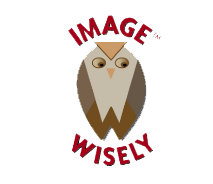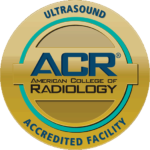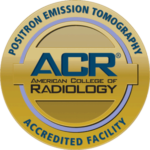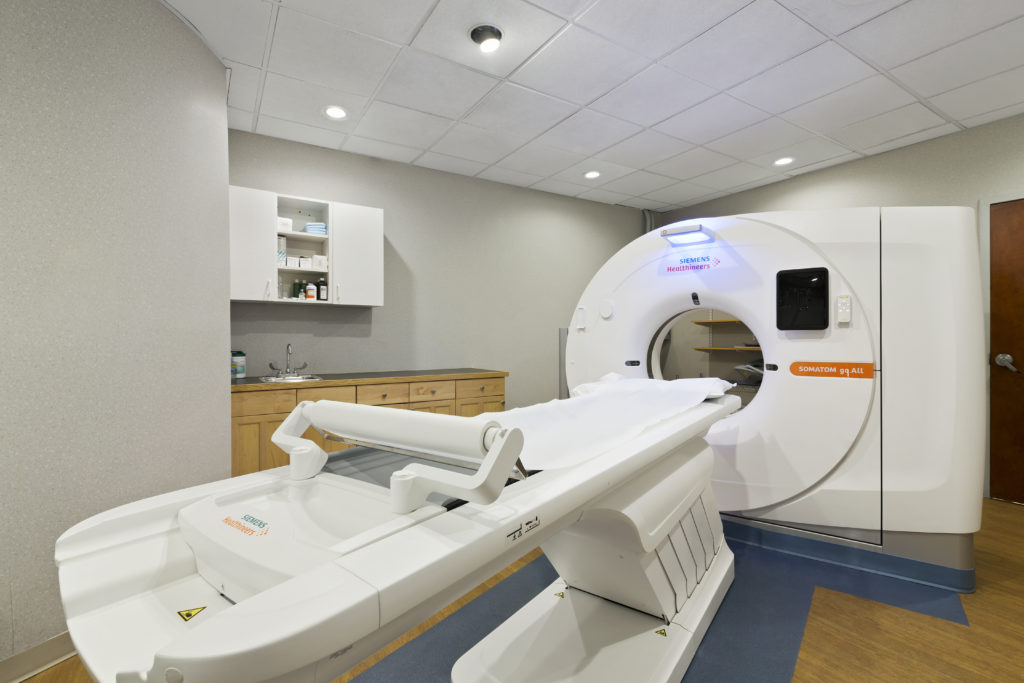
Computed Tomography (CT) is a diagnostic imaging test used to create detailed images of internal organs, bones, soft tissue and blood vessels. The cross-sectional images generated during a CT scan can be reformatted in multiple planes, and can even generate three-dimensional images which can be viewed on a computer monitor, or transferred to electronic media. CT scanning is often the best method for detecting many different cancers since the images allow your doctor to confirm the presence of a tumor and determine its size and location. CT is fast, painless, noninvasive and accurate.
We have recently further enhanced our cutting edge imaging technology with the addition of a new 64-Slice Dose Modulated Computed Tomography (CT) machine that performs a wide range of clinical tasks from routine procedures to advanced clinical applications.
Learn more about the 64-Slice Dose Modulated Computed Tomography (CT) machine and its capabilities
During the Exam
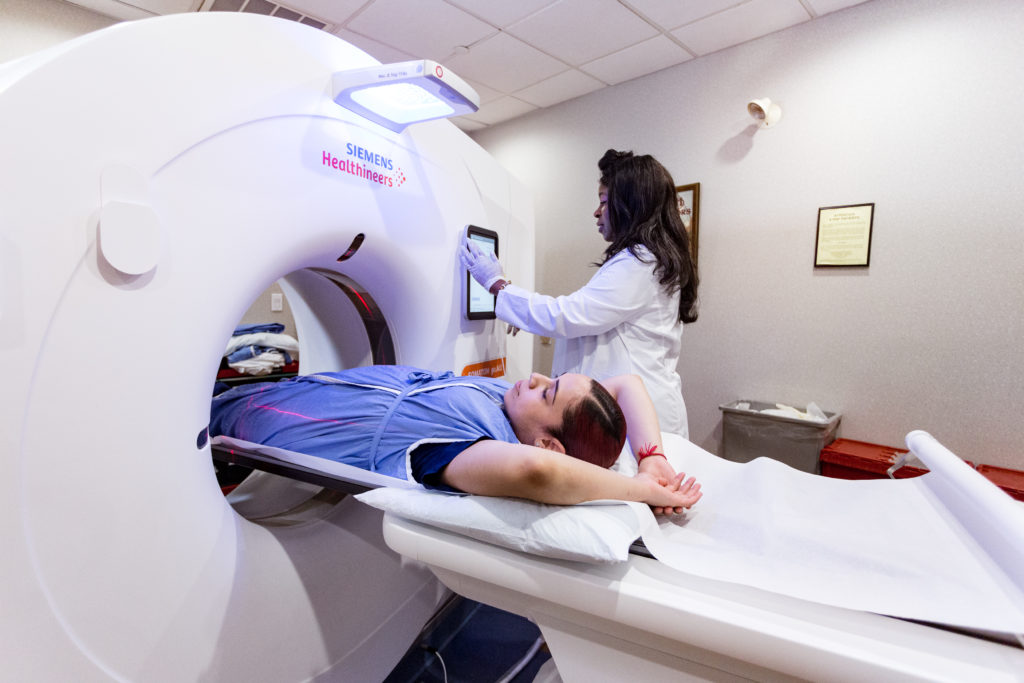
During the CT scan, the patient will be asked to rest motionless on a padded table. The table moves as the images are obtained and most scans are completed within 30 seconds. The patient will hear faint humming and clicking sounds. It is important to lay still to not compromise image quality. Sometimes because of breathing or motion inside the body additional images are needed. Additional images do not mean there is a problem.
Depending on the part of the body being scanned, different contrast materials are used. Contrast materials are administered either orally or via intravenous administration. Contrast is a liquid material that enhances the images of the organs and/or blood vessels.
Once the patient is positioned correctly, the technologist will leave the room to operate the CT machine from a workstation in a control room. During the CT exam, the technologist and patient can communicate at any time using an intercom. The technologist watches the patient during the study and monitors the progress of the image during the study.
Preparation
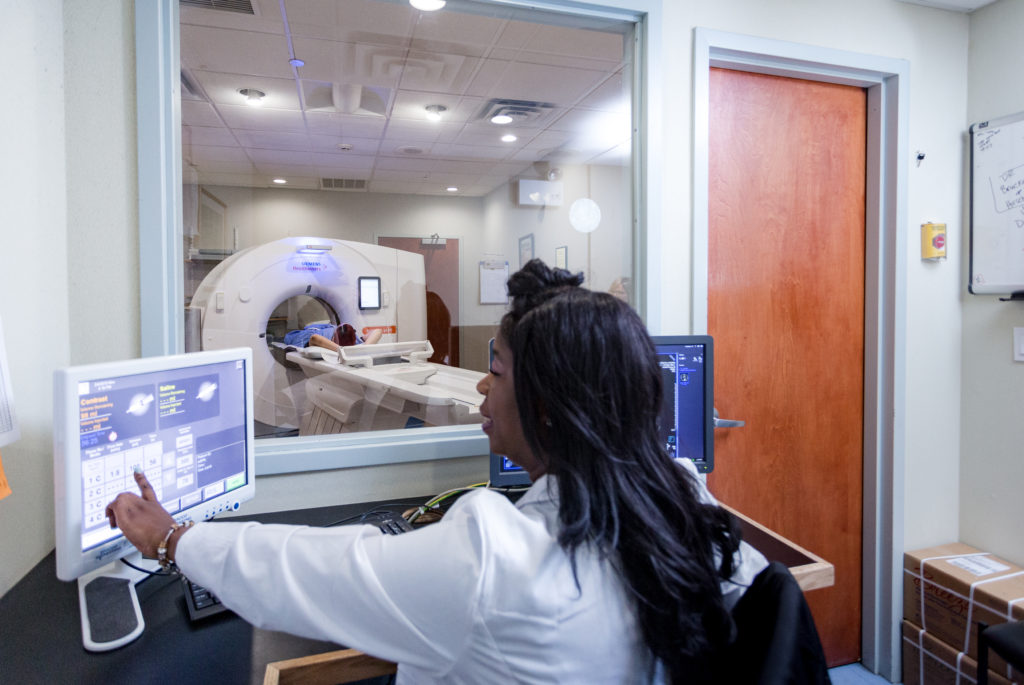
Patients should wear comfortable, loose-fitting clothing for their CT exam. Patients will be asked to remove any articles of clothing that may negatively affect the CT images such as belts, earrings, bras, glasses, dentures, and hairpins. Zippers and snaps common in many clothes can also negatively affect the image.
Patients having an exam with contrast should not have anything to eat or drink 4 hours prior to the exam.
Bloodwork is required prior to contrast exam for patients who are 60 years old or older or patients with diabetes, high blood pressure, or kidney disease
You will be given instructions on how to prepare for your specific scan when you call to schedule.





